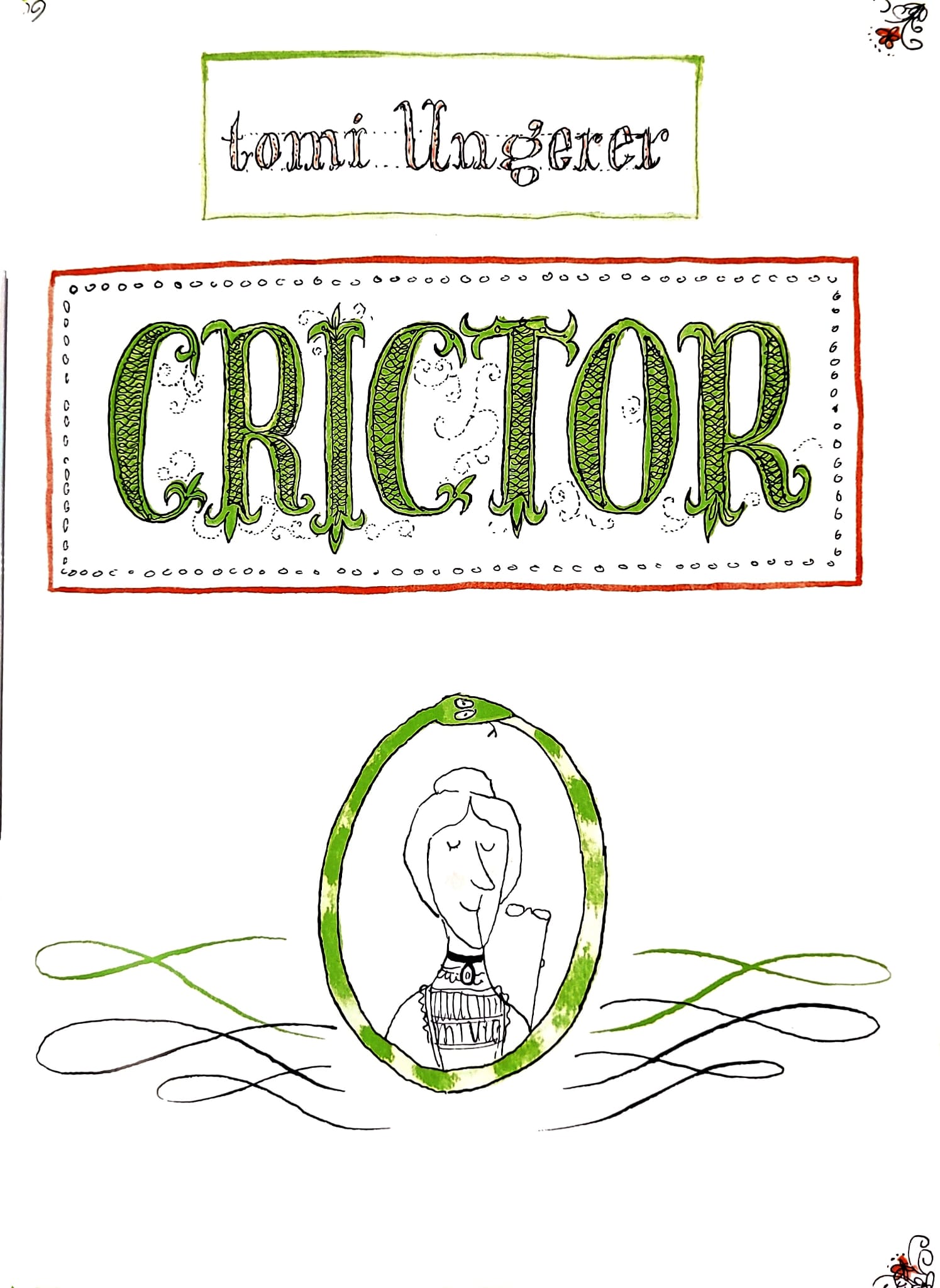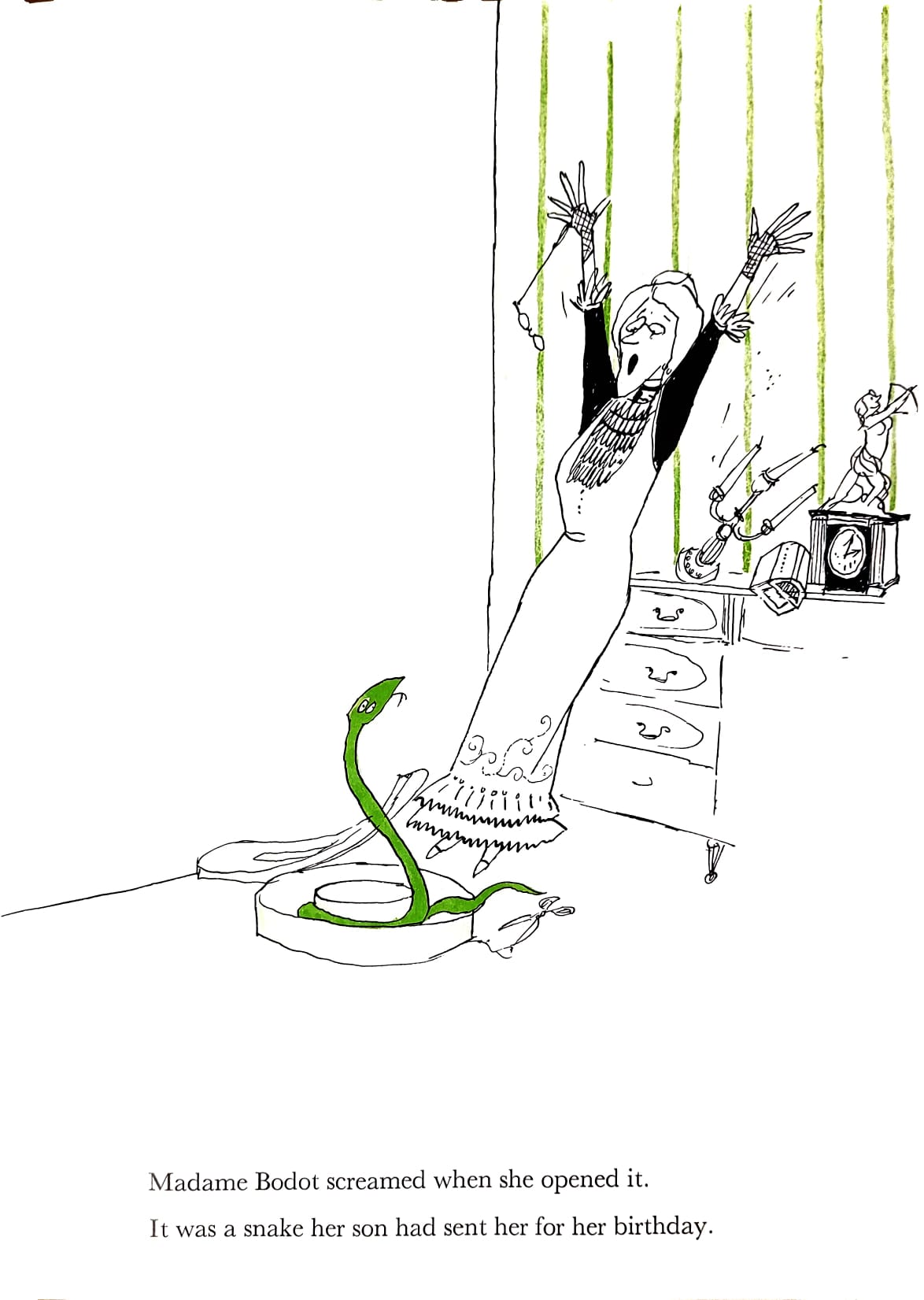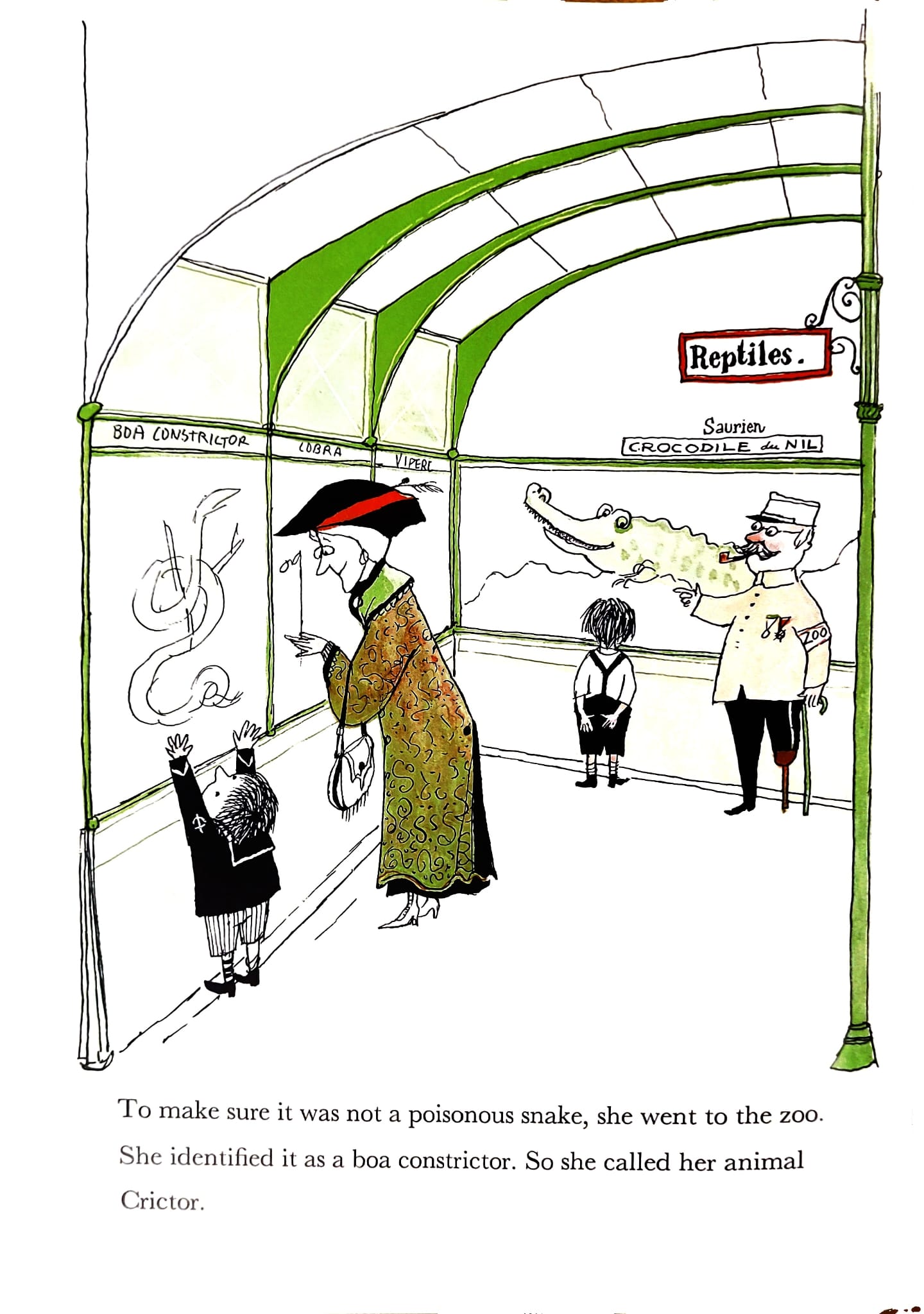 We just came across this children’s book titled “Crictor” by Tomi Ungarer, first published in 1958. It’s about an old woman in Paris who receives a surprise gift of a snake, mailed in a circular box, shipped by her son who is a reptile researcher in Africa. She nurtures and cares for this snake, whom she names “Crictor” what she does for this snake, and how close they become, how easy he is with kids, and how he saves her in a time of need.
We just came across this children’s book titled “Crictor” by Tomi Ungarer, first published in 1958. It’s about an old woman in Paris who receives a surprise gift of a snake, mailed in a circular box, shipped by her son who is a reptile researcher in Africa. She nurtures and cares for this snake, whom she names “Crictor” what she does for this snake, and how close they become, how easy he is with kids, and how he saves her in a time of need.
As many of you know, it is our way (in the spirit of the Baal Shem Tov’s “find a lesson in serving G-d from everything we encounter, nurtured by Rebbe Rashab’s Vyadayta Moskve Maamar message of seeing all the world as a parable etc) to find lessons and messages in children’s books.
In this book, one page turn (two sides of the same page) in particular jumped out with an important message:
 When this old woman in Paris, Madame Louise Bodot opened the mysterious circular box, a snake pops out, and she has the fright of her life!
When this old woman in Paris, Madame Louise Bodot opened the mysterious circular box, a snake pops out, and she has the fright of her life!
See this illustration: her hands flew upward, she’s falling backwards, she’s losing her glasses, everything behind her is shaking and quaking. She’s shocked and terrified.
Wouldn’t you be?
So what do you think she does next? What follows after this tremendously emotional response? What does she do after being overwhelmed with shock and fear?
We turn the page.
We find her at the Zoo. She’s doing her research. She is relieved to find out this is merely (!!) a boa constrictor and not a poisonous snake. Once she knows that, she returns to nurture and care for the snake, from feeding it milk to knitting it a long sweater, making its bed and taking it for walks.
We often can’t help the initial emotional response. It’s instinctive and natural. But then our thinking cap can and should kick in. That’s when our thoughtful research part starts. Madame Bodot went to the zoo, she analyzed the situation (and the snake) from a rational point of view. She thought about it, she explored it, she figured out how to deal with it.
Importantly, she had to be sure this wasn’t a poisonous snake. It seems obvious from the book that had this snake been poisonous she wouldn’t have been able to handle it. In life, too, we can’t embrace every fear, we can’t engage with every situation, as some are toxic or unhealthy for us. Some might not be good for our future. It might be the wrong move for our Judaism. It might lead us down places we don’t want to go. So we have to rule that out, as Madame Bodot did.
But once we ascertain that there’s no such threat, we can often embrace or engage with things that we initially may have been fearful of or had misconceptions about. Our initial response may be overly emotional but once we get to know more about it, or develop some thoughts on it, we may see there are aspects or parts of this that may be valuable. Even if at first we’re overwhelmed emotionally, it can be possible (as long as its not toxic or negative or bad for us) that we can better engage with it. But for that we need to explore it rationally, thoughtfully, practically.

